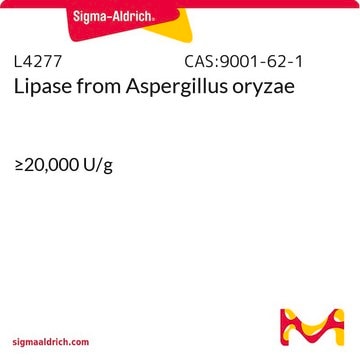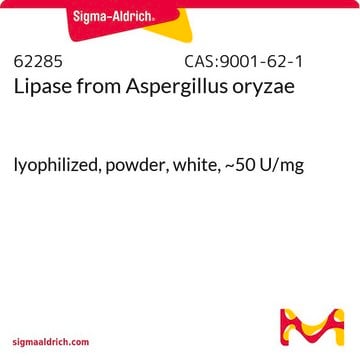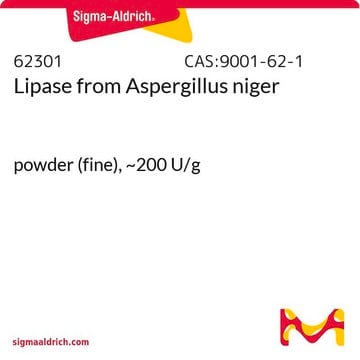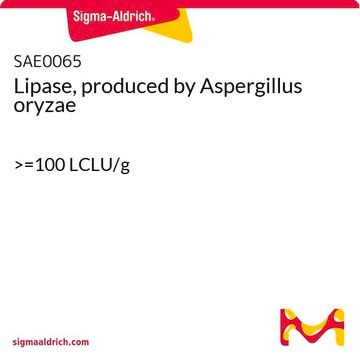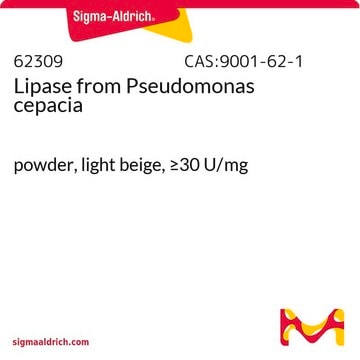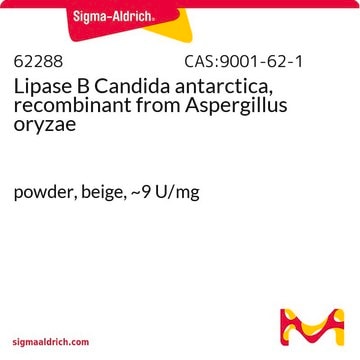L0777
Lipase from Aspergillus oryzae
solution, ≥100,000 U/g, white, beige
Synonym(s):
AOL, Lipolase 100L
About This Item
Recommended Products
biological source
Aspergillus sp. (Aspergillus oryzae)
form
solution
specific activity
≥100,000 U/g
storage condition
(Tightly closed. Dry)
technique(s)
cell based assay: suitable
color
beige
white
storage temp.
2-8°C
InChI
1S/C11H9N3O2.Na/c15-8-4-5-9(10(16)7-8)13-14-11-3-1-2-6-12-11;/h1-7,16H,(H,12,14);/q;+1/b13-9-;
InChI key
QWZUIMCIEOCSJF-CHHCPSLASA-N
Looking for similar products? Visit Product Comparison Guide
General description
Lipase is derived from Aspergillus oryzae by ammonium sulfate precipitation and chromatography.Lipases or triacylglycerol acyl hydrolases are a group of hydrolase enzymes that are usually found in humans and animals with monogastric stomachs. Lipase enzymes are generally formed in the pancreas and stomach where they aid in fat and lipids digestion.(2)
Application
- as a control enzyme in activity assays
- as a component in lipolase stock solution for the hydrolysis experiments
- to incubate scaffolds for lipase-accelerated degradation experiments
- as the lipolytic enzyme standard to detect lipolytic enzymatic activity via chromogenic agar plates and zymography
Biochem/physiol Actions
Preparation Note
Legal Information
Substrate
antibody
enzyme
related product
signalword
Danger
hcodes
pcodes
Hazard Classifications
Resp. Sens. 1
Storage Class
11 - Combustible Solids
wgk_germany
WGK 1
flash_point_f
Not applicable
flash_point_c
Not applicable
ppe
Eyeshields, Gloves, type N95 (US)
Certificates of Analysis (COA)
Search for Certificates of Analysis (COA) by entering the products Lot/Batch Number. Lot and Batch Numbers can be found on a product’s label following the words ‘Lot’ or ‘Batch’.
Already Own This Product?
Find documentation for the products that you have recently purchased in the Document Library.
Customers Also Viewed
Our team of scientists has experience in all areas of research including Life Science, Material Science, Chemical Synthesis, Chromatography, Analytical and many others.
Contact Technical Service